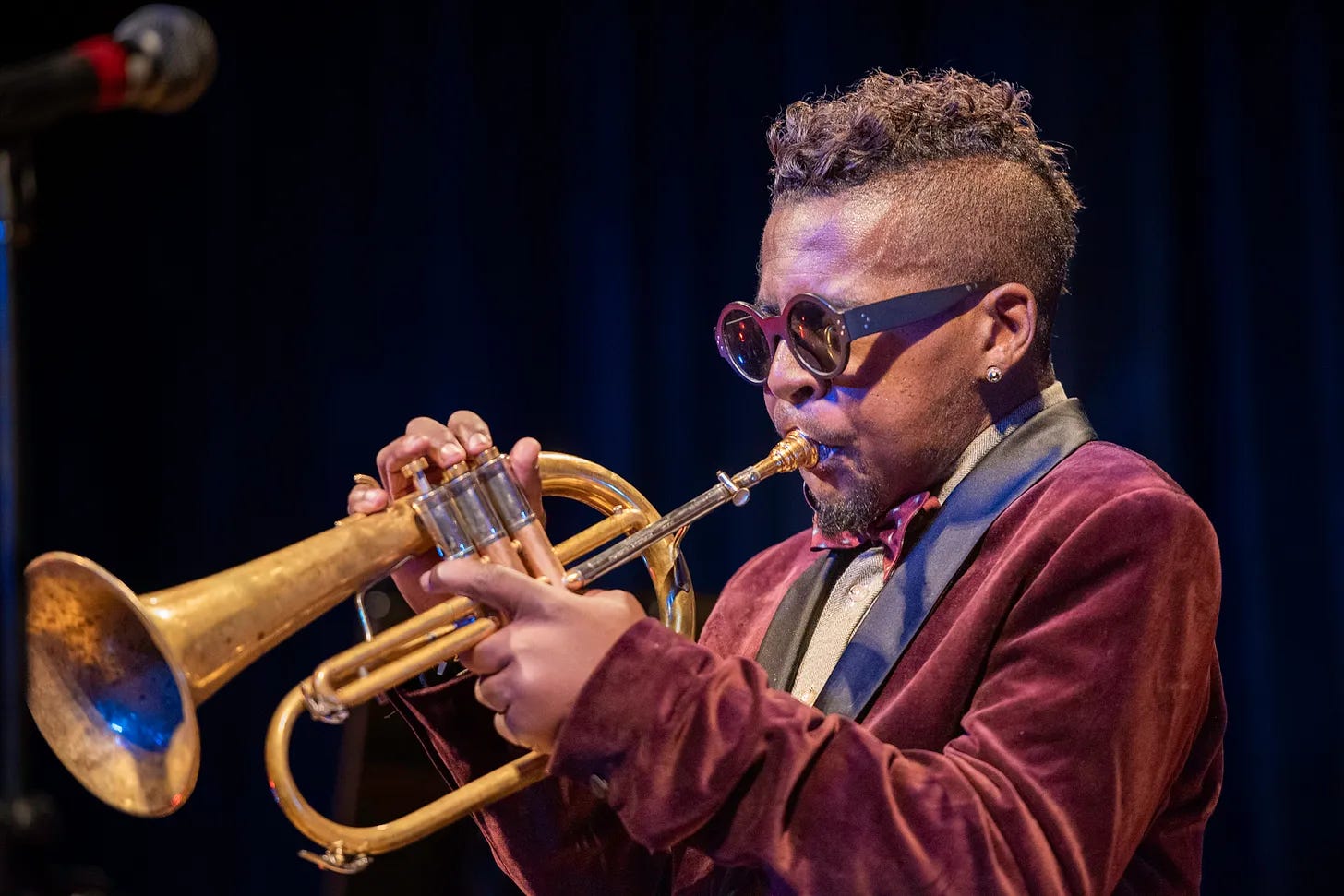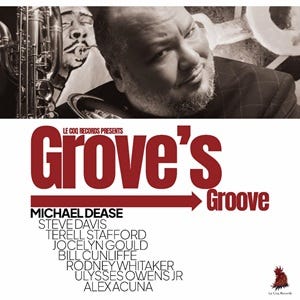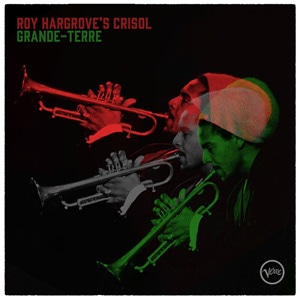For The Love Of Roy Hargrove
Michael Dease — Grove's Groove (Le Coq Records, 2024) and Roy Hargrove's Crisol — Grande-Terre (Verve Records, 2024)
Trumpeter Roy Hargrove died too young in 2018 from cardiac arrest secondary to chronic disease. Hargrove released 19 recordings during his professional life of nearly 20 years while lending his horn to over 50 releases as a sideman. He remains very much in the thoughts of those with whom he played, as evidenced by these two releases, on in honor of him and one previously unreleased by him.
People mostly know trombonist Michael Dease as a… trombonist! But Dease also plays a mean baritone saxophone as he shows on Grove’s Groove. Dease has divided his time between the two instruments on several of his previous recordings, such as, The Other Shoe (The Music Of Gregg Hill) (Origin Records, 2023) and Found In Space (The Music Of Gregg Hill) (Origin Records, 2024). On his tribute to Hargrove, Dease puts on his hard bop hat and goes to work with a dream band, including: Dease on baritone saxophone, percussionist Alex Acuna, trumpeter Terell Stafford, guitarist and vocalist (and what vocals!) Jocelyne Gould, pianist Bill Cunliffe, bassist Rodney Whitaker, and drummer Ulysses Owens Jr.
Dease shows he is very comfortable in the low-key, dense bottom vision of Hargrove, captured in his performance of “Minor Funk,” where Dease provides a most elegant solo on one of the most difficult instruments with which to solo. Dease is as perfectly comfortable on a blues like the title opener and the languid bebop of “Father Figure,” on which Rodney Whitaker delivers a swinging, on-time solo. Guitarist/vocalist Gould almost steals the show with her vocals on a beautifully updated “Tea For Two” and “Never Let Me Go.
But Dease and his baritone saxophone remain the spiritual center of this project, lending the gravity necessary to keep such a group of accomplished musicians in a specific and focused orbit, that of Roy Hargrove.
Hargrove formed his ensemble Crisol in the late 1990s, releasing the band’s first offering Habana in 1997. The recording won a Grammy Award for Best Latin Jazz Performance. Habana had a fresh Afro-Cubano vibe, thoroughly informed by Hargrove’s keen hard bop sensibilities. Many believed Hargrove would expand the band's discography, but he released no new Crisol recordings before his death.
But that did not mean that Hargrove and the band did not record any.
Soon after the festivities were over for Habana, Hargrove summoned Crisol back into the studio sporting a slightly different makeup, recording a new recital that has, until now, not been heard outside the Verve corporate offices. The recording entitled Grande-Terre broadened and deepened Hargrove’s Carribian resonance, with the trumpeter seeking and achieving a denser, more vibrant sound he knew the band was capable of.
This time around, Hargrove mix Crisol up with some different musicians from the previous recording. While welcoming back trombonist Frank Lacy, the trumpeter filled out the band with alto saxophonist Sherman Irby, tenor saxophonist Jacques Schwarz-Bart, pianists Larry Willis and Gabriel Hernández, guitarist Ed Cherry, bassist Gerald Cannon, drummer Willie Jones, percussionists Miguel “Angá” Diaz and Changuito, and drummer/vocalist Julio Barreto. The newly reconstituted Crisol recorded the material on the Caribbean island of Guadeloupe, a French holding in the Lesser Antilles.
Hargrove paid additional attention to percussion than he did on Habana. It saturates the music of Grande-Terre. Thick in the sonic mix are every snare snap, cymbal crash, and conga rub, inhabiting the specific place where they belong. A humid and undulating percussion base underpins the music, providing the harmony and melody instruments a sure a solid path. The album opener, “Rhumba Roy,” blasts out of nowhere like the Big Bang with a devilishly complex head that is anchored to this persistent percussion. Hargrove proves his mettle in his opening solo. Sherman Irbyu contributes his alto saxophone gone sideways, while trombonist Lacy ties up the solo section is a slurring bow that gives way to a lengthy piano solo before returning to the theme. Written for his daughter, Hargrove’s “Kamala’s Dance” is all soft edges executed among an ever present rhythm. Sumptuous and inviting is the opening counterpoint of “Lullaby From Atlantis.”
Grande-Terre serves as a pointed reminder of Roy Hargrove's passing. It also highlights the vital place that memory has in music…and all art.






Thank you Michael for this beautiful review !